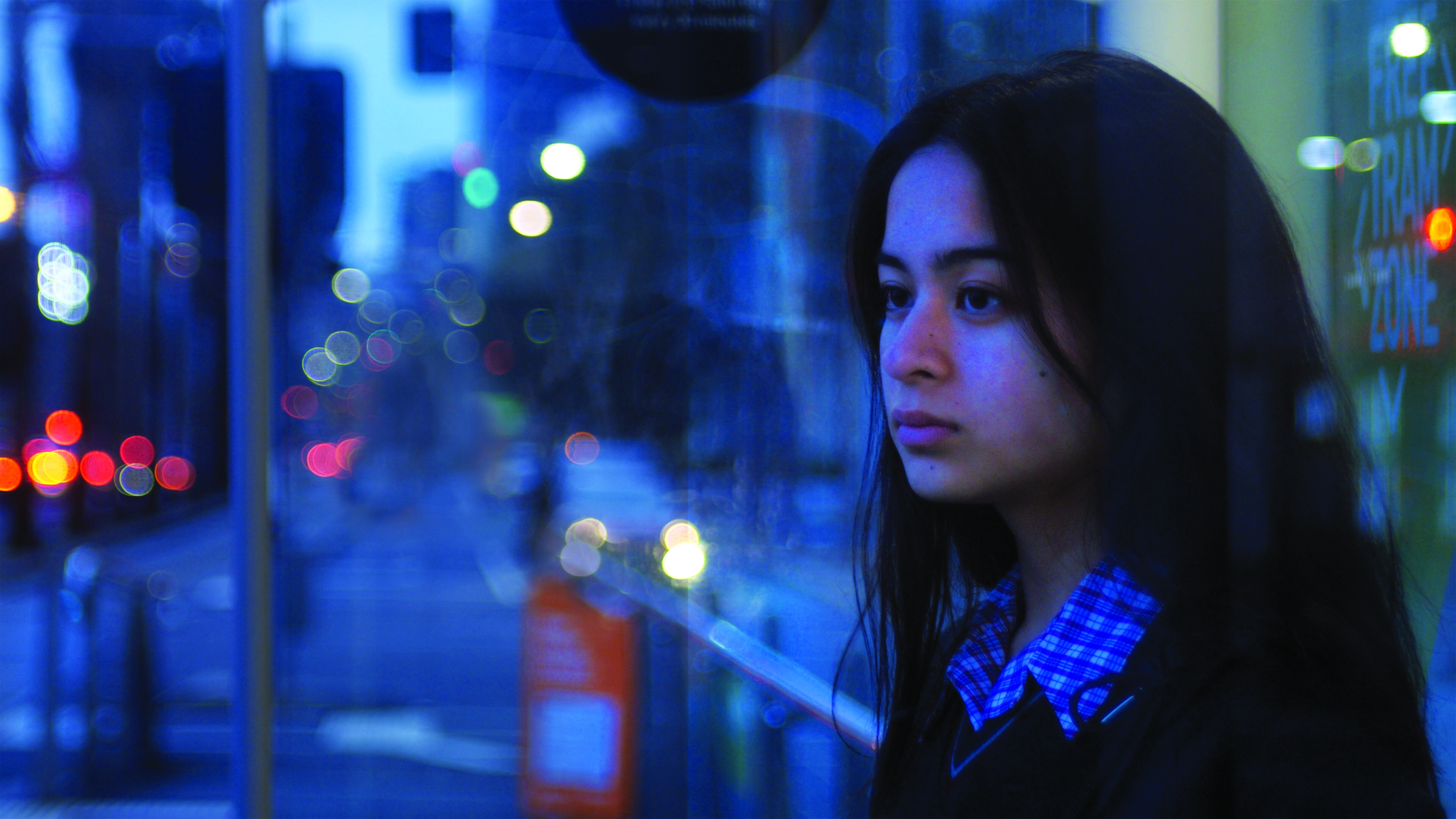In recent years, Matthew Victor Pastor has cemented his position as Australia’s most prolific and contemporarily engaged filmmaker. While the COVID-19 pandemic ground film production to an unceremonious halt in 2020, Pastor found inspiration and innovation, producing a new trilogy of films that reflect the isolation and uncertainty of the moment.
Shot under socially distant conditions during Melbourne’s protracted lockdown, the first film in this trilogy, The Neon Across the Ocean, had its international premiere in late 2020 at the MOSTRA film festival in São Paulo. The film finds Pastor continuing to explore his signature themes: belonging and identity, as experienced by young Filipino-Australians in Melbourne. But pandemic conditions have brought a new sensibility to Pastor’s oft-frenetic filmmaking, with The Neon Across the Ocean taking on a contemplative and observational tenor.
The film follows teenage Mandy (Waiyee Rivera) in her final year of high school in Melbourne in an unspecified future a few years from now, as daily life continues to be impacted by ongoing pandemic. Over the course of the year, Mandy attempts to make sense of the feelings developing within her for her tutor, Serena (Chi Nguyen), and meet the expectations of her separated parents, Anna (Rachel Javier) and Gerald (Gregory Pakis). Mandy is continually drawn to the waterfront at the edge of the city, where she dreams of the ancestral homeland she has never seen, evoked in impressionistic montage of rain-soaked Manila. In the film’s lead role, Rivera has a striking, soulful presence on screen, and brings a genuine vulnerability to her performance. The emotional intimacy that subtly develops between her and Serena underscores the loneliness of the two characters, amplified by the film’s COVID context.
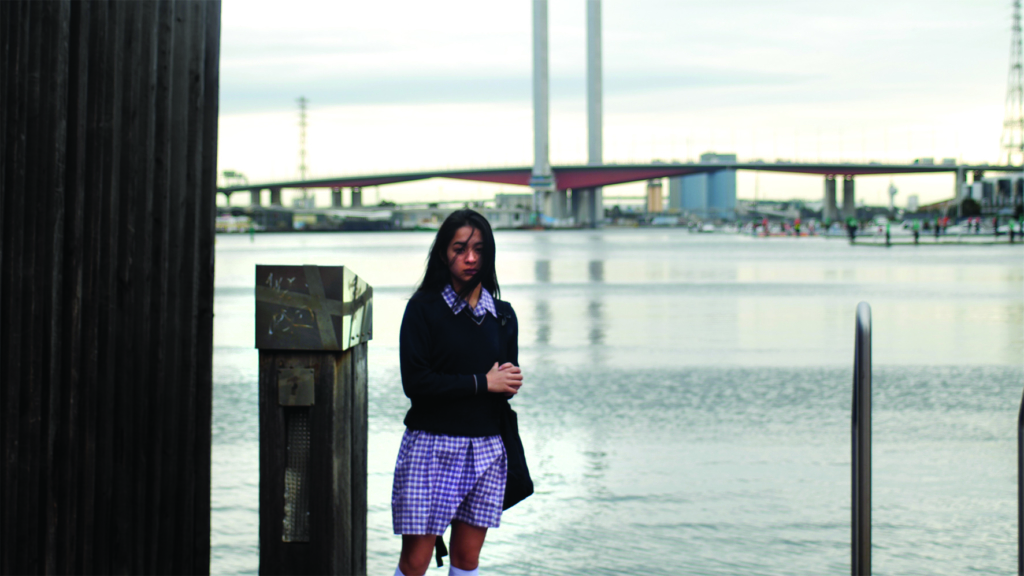
Interviewed over Zoom – fittingly, given the film’s themes of isolation and distance – Pastor revealed to me that the project’s central concept long predated COVID-19:
The concept of a Filipino-Australian with a half-sister in the Philippines was an idea I’ve had for years. I think I conceived this concept around [I am JUPITER, I am the BIGGEST PLANET (2016)].[1]Pastor’s Master’s film, which was also shot in Manila’s red-light district. But it wasn’t something that finally settled and eventuated to become a movie. I was chipping away at these different shots in the Philippines […] Every time I go to the Philippines, I bring my DSLR [camera] and I get more and more shots.
The project was interrupted early in its production when Melbourne first faced COVID restrictions in March 2020. As Melbourne’s second lockdown dragged on from July until October, production became seemingly impossible. During his period of imposed isolation, Pastor reconnected with the sprawling films of Lav Diaz, and also found inspiration in a piece by Thai filmmaker Apichatpong Weerasethakul in De Filmkrant, who writes on the impact of COVID on audiences:
They have mastered the art of looking: at the neighbors, at the rooftops, at the computer screens. They have trained through countless video calls with friends, through group dinners captured in one continuous camera angle. They need a cinema that is closer to real life, in real time.[2]Apichatpong Weerasethakul, ‘Signs of Life: A Letter from Apichatpong Weerasethakul’, De Filmkrant, 2 May 2020, <https://filmkrant.nl/opinie/signs-life-a-letter-from-apichatpong-weerasethakul/>, accessed 23 April 2021. Minor modification of punctuation.
For Pastor, that challenge manifested in a newfound confidence to ‘be braver and not be afraid to go down that path, making art that’s almost silent [… and] responding to the moment and not letting the anxiety take over fully’. Under ongoing lockdown conditions, he revived his Neon Across the Ocean concept with COVID now adding a thematic dimension to its narrative.
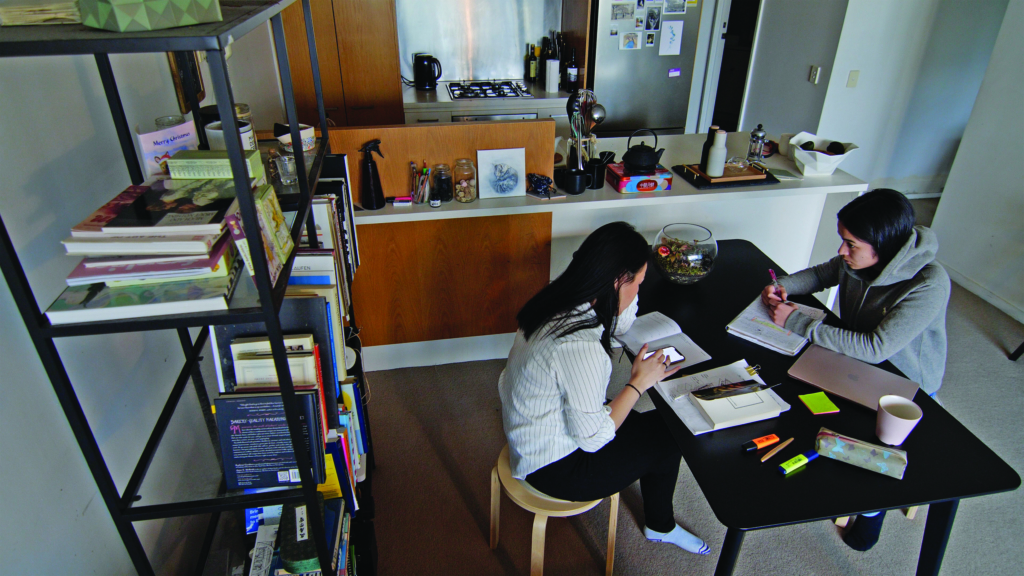
Pastor also used this time to conceptualise his trilogy, framing the respective instalments around notions of past, present and future. Past is represented by the upcoming Plans That They’ve Made, a sparse and meditative documentary portrait of Pastor’s frequent collaborator (and producer on all three films) Evangeline Lee, who also co-directs, exploring the impact that COVID has had on her daily life in Melbourne, placing her filmmaking plans for the year on hold; while present is covered by A Pencil to the Jugular (2021), which contrasts eerily silent city streets with the chaotic, intersecting lives of a group of economically precarious young people in Melbourne and its surrounding suburbs. The latter film’s chronology skips backwards and forwards in time, shifting to black-and-white to delineate the arrival of the March 2020 lockdown, further compounding the difficulties faced by its characters (Pastor tells me that many of A Pencil to the Jugular’s performers are no longer in the country, and that this presented a major challenge for the project’s completion). The film effectively evokes a simmering atmosphere of escalating tension, as insidious instances of structural racism and their more overt manifestations are thrown into stark relief.
However, it is the ‘future’ instalment of the trilogy that arrives first with The Neon Across the Ocean, which explores the uncertain aspirations of its protagonist, at the cusp of adulthood during a period in which life remains seemingly (and continually) on hold. The project was shaped by necessity: its framing voiceover was recorded on audio cassette as the director and performer were unable to share the same space. The film was slated to feature a section in the Philippines, with Pastor’s flights booked for March and April 2020. Once that was off the cards, he had to restructure the narrative, but found a way to limit Mandy’s story to Australia and reinforce its themes, telling me that:
There’s a longing in the story if we never see her connect to the motherland [that] very much relates to how everyone feels right now, because we can’t connect to the motherland, people aren’t travelling to their home cities, we’re stuck.
Pastor says of the practicalities of lockdown filmmaking that ‘limitation is possibility’: exterior shots were caught on the fly on permitted walks to and from the supermarket for grocery shopping, with the director utilising available cafe tabletops in lieu of a tripod. In embracing the influences of Weerasethakul and Diaz, he has produced a film that has considerably more space than his past body of work. Social distancing restrictions mandated space between characters and the camera, manifesting in the framing of bodies within architectural spaces. While Pastor notes that his filmmaking has always been defined by ‘the landscapes of Melbourne’ and ‘the idea of me placing diasporic Asian characters in that context’, he says the conditions of the pandemic introduced a new dimension to these locations:
When you clear all the human beings out of those spaces, what you get is a silence and an emptiness and a sparseness […] The direct response is only to continue with my normal narrative aesthetic, but with characters up against the landscape where the character of the city can be even more prominent.
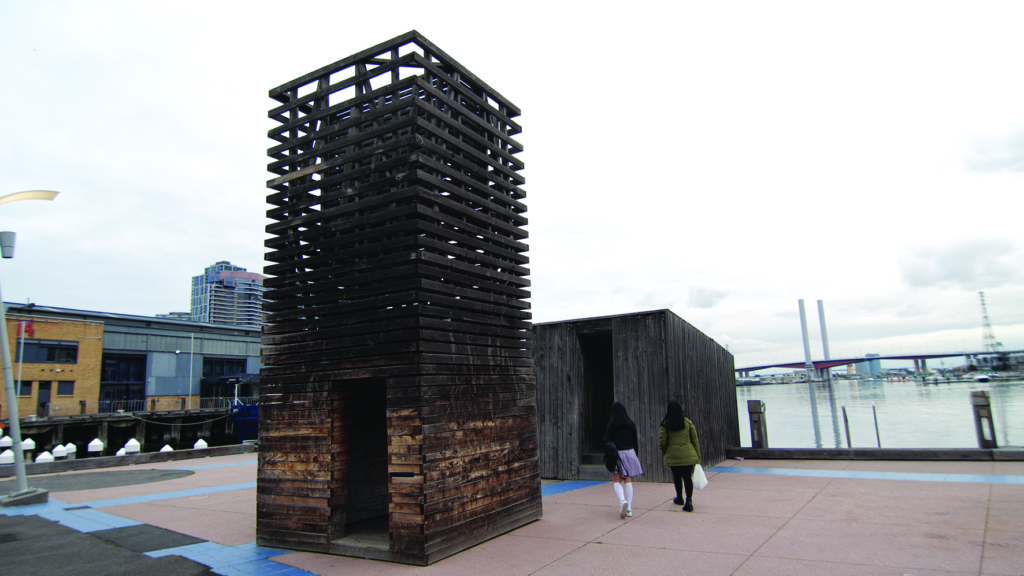
The film makes prominent use of Melbourne’s oft-maligned suburb of Docklands, and the character of its hyper-modern architecture showcases a part of Melbourne that is rarely seen on screen, an anonymous space that could well be Sydney’s Barangaroo development, Hong Kong’s West Kowloon Cultural District, New York’s Hudson Yards or any number of other recent large-scale redevelopments of reclaimed land. For Pastor, the decision to utilise such locations for a film ‘set in the not-too-distant future’ was primarily a practical one:
I can’t think of any more futuristic landscapes than Docklands in Melbourne […] I don’t have the budget to do a film like Gattaca [Andrew Niccol, 1997], but what I do have is a location that’s very close by to my residence that looks kind of as close as I’m going to get to that.
In this way, the use of such locations produces an effect similar to theorist Fredric Jameson’s diagnosis of postmodern architecture and its tendency to produce an
alarming disjunction point between the body and its built environment [that …] can itself stand as the symbol and analog of that even sharper dilemma which is the incapacity of our minds, at least at present, to map the great global multinational and decentered communicational network in which we find ourselves caught as individual subjects.[3]Fredric Jameson, ‘Postmodernism and Consumer Society’, in E Ann Kaplan (ed.), Postmodernism and Its Discontents: Theories, Practices, Verso, London & New York, 1988, p. 25.
Although Pastor has produced what is perhaps his most visually expansive, cinematic work to date, many of its first viewers may well encounter the film on computer screens.
In the COVID moment, the experience of fragmentation and alienation, along with the fundamental incomprehensibility of our age, turns inwards. Individuals become all the more isolated and solipsistic as interaction is highly mediated through virtual encounters, and geographies shrink to our immediate surroundings and the screens that surround us. The irony is that, although Pastor has produced what is perhaps his most visually expansive, cinematic work to date, many of its first viewers may well encounter the film on computer screens. And while Pastor retains his fondness for theatrical exhibition, he is not overly concerned about how people view his films, saying that ‘the expression is the most important [thing]’, and noting that it is the same technology that has enabled him ‘to make films on a very low budget’.
It should be of no surprise that technology and its implications are on Pastor’s mind. As COVID lockdowns over the past year-and-a-half have taken us further away from one another and into the glow of our computer screens, The Neon Across the Ocean explores the psychic toll for a young woman attempting to make sense of her identity and isolation from her cultural heritage. Pastor, for his part, is optimistic about the opportunity that digital technologies have created for young filmmakers:
The good news about a lot of the younger-generation people, anyway, is they spend their life in front of a screen […] They’ve just spent their life TikToking or whatever […] It’s an exciting way to work. It’s almost like having a documentarian’s lens, but also making narrative films.
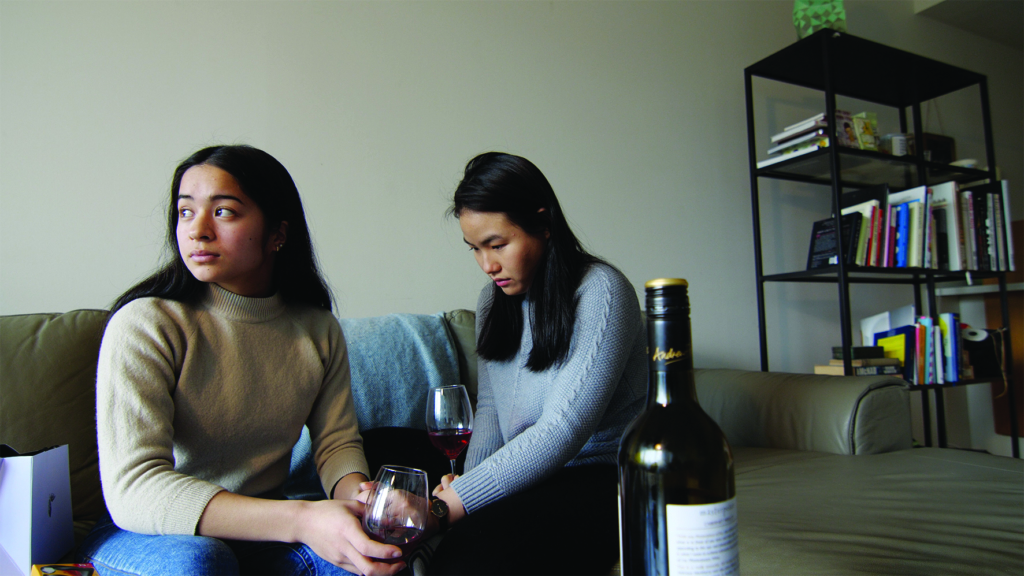
The director’s 2019 documentary self-portrait Between Worlds: Filipino / Australian made a case for more meaningful diversity on screen. Pastor has seen considerable improvement in that area in recent years, with emerging filmmakers expanding the frame of representation. He maintains his hope that the current generation of social media users will ultimately make their own distinctive contributions to the form:
I’m seeing these younger people already fulfilling that role that I for the last ten years have been trying to advocate for as a filmmaker. It’s awesome to see that. When I was younger, there [weren’t] so many of these diverse stories coming up. Seeing that, I also want to say that what I want to see more of is, eventually, them [having] the ability and bravery to go on to feature filmmaking, and really find themselves telling singular stories in that. Be brave about the types of stories they tell, be ambitious with the types of stories. Technology will get better and better, and they’ll be able to make [films] on lower budgets. And hopefully the industry itself doesn’t scare them out of that. So I want to see that singularity and solidarity […] One day there’s going to be some kid that might make a feature film like I do, but they’ll have a following of multimillions – that excites me. […] Hopefully people will also be able to write novelistic, great works. And then what you’ll see is a boom of all of these people that take over. The idea that the youth can do that: I fucking love that.
Over the course of the last decade, Pastor has consistently demonstrated his ambition and responsiveness, addressing our contemporary circumstances with a clarity that is rare in this country. If, as he predicts, the next generation can harness the momentum of their social media output and find inspiration in the prolificacy and work ethic of a director like Pastor, then Australian cinema will find itself in a considerably better place in years to come.
Endnotes
| 1 | Pastor’s Master’s film, which was also shot in Manila’s red-light district. |
|---|---|
| 2 | Apichatpong Weerasethakul, ‘Signs of Life: A Letter from Apichatpong Weerasethakul’, De Filmkrant, 2 May 2020, <https://filmkrant.nl/opinie/signs-life-a-letter-from-apichatpong-weerasethakul/>, accessed 23 April 2021. Minor modification of punctuation. |
| 3 | Fredric Jameson, ‘Postmodernism and Consumer Society’, in E Ann Kaplan (ed.), Postmodernism and Its Discontents: Theories, Practices, Verso, London & New York, 1988, p. 25. |
